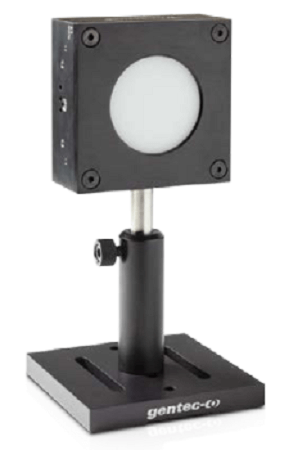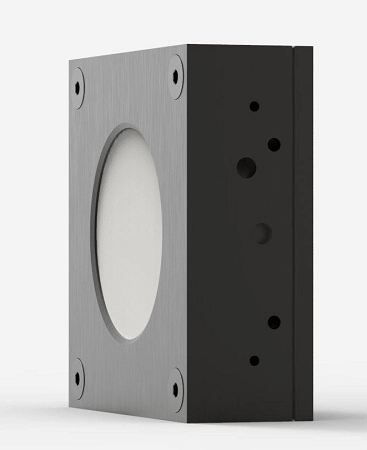Description
KEY FEATURES:
1. MODULAR CONCEPT
Increase the power capability of your detector: 4 different cooling modules
2. HIGH PEAK POWER VOLUME ABSORBER
Perfect for pulsed beams with high energy density
3. LARGE APERTURE
52 mm Ø aperture accomodates the largest beams
4. HIGH AVERAGE POWER
Up to 300 W of continuous power with the water-cooled unit
5. ENERGY MODE
Measure single shot energy up to 1000 J
6. SMART INTERFACE
Containing all the calibration data
Specification:
Measurement capabilities:
-
Maximum average power (continuous): 50 W
-
Maximum average power (1 minute): 50 W
-
Noise equivalent power1 : 15mW
-
Spectral range2 :0.266 – 2.5 μm
-
Typical rise time3: 4 sec
-
Typical power sensitivity4: 0.06 mV/W
-
Power calibration uncertainty5 :±2.5 %
-
Repeatability: ±0.5 %
- 1. Nominal value, actual value depends on electrical noise in the measurement system.
- 2. For the calibrated spectral range, see the user manual.
- 3. With anticipation.
- 4. Into 100 kΩ load. Maximum output voltage = sensitivity x maximum power.
- 5. Including linearity with power.
Measurement capabilities (Energy mode):
-
Maximum measurable energy1: 1000 J
-
Noise equivalent energy2: 0.25 J
-
Minimum repetition period: 9 s
-
Maximum pulse width: 371 ms
-
Energy calibration uncertainty3: ±5 %
- 1. For 360 μs pulses. Higher pulse energy possible for long pulses (ms), less for short pulses (ns).
- 2. Nominal value, actual value depends on electrical noise in the measurement system.
- 3. When single-shot energy calibration is purchased
Damage thresholds:
-
Maximum average power density1: 100 kW/cm²
-
Maximum energy density2: 8 J/cm
-
- 1. At 1064 nm, 10 W CW. May vary with wavelength and average power.
- 2. At 1064 nm, 7 ns, 10 Hz. May vary with wavelength and pulse width.
Physical characteristics:
-
Aperture diameter: 52 mm
-
Absorber: QED
-
Dimensions: 89H x 89W x 32D mm
-
Weight: 0.62 kg






